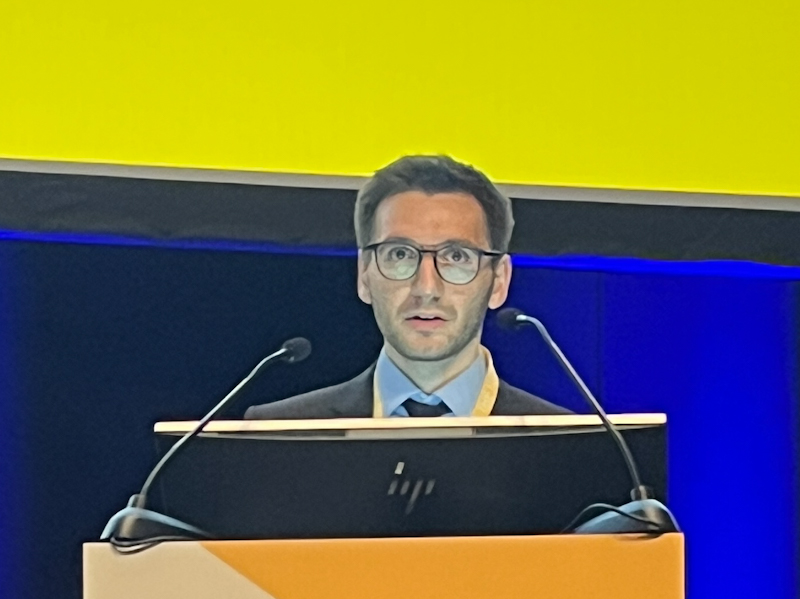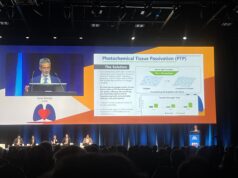
A prospective study indicates that the prevalence of new-onset atrial fibrillation (AF) after coronary artery bypass graft (CABG) surgery may be significantly higher than previously reported, but the extremely low burden of the disease calls into question the need for long-term oral anticoagulation for patients undergoing the procedure.
These and other talking points emerged from the CABG-AF trial, an investigator-initiated study of the incidence and burden of AF following CABG procedures. For the trial, surgeons at two cardiac centres in Germany implanted insertable cardiac monitors in 198 patients with three-vessel or left main coronary artery disease and no history of arrhythmias who underwent a bypass procedure between November 2019 and November 2023. Patients were monitored continuously for 12 months for any occurrence of AF lasting two minutes or longer.
“Large-scale contemporary studies investigating new-onset AF after cardiac surgery have been limited methodologically by their temporally restricted application of in-hospital telemetry and intermittent short-term monitoring after discharge,” said Florian Herrmann (Ludwig-Maximilians-Universität München, Munich Germany), detailing the findings at the 39th European Association for Cardio-Thoracic Surgery (EACTS) annual meeting (8–11 October, Copenhagen, Denmark), alongside their simultaneous publication in the Journal of the American Medical Association (JAMA).
Herrmann reported that new-onset AF, the trial’s primary endpoint, occurred in 95 of the 198 patients studied, resulting in a cumulative incidence of 48%. The median length of AF episode seen in the study was 6 minutes, with a median time to AF of 3.3 days. Of these episodes, 63% of episodes were asymptomatic, and 67% went undetected by standard monitoring.
The median AF burden at 12 months was 0.07%, corresponding to 6 hours 10 minutes of AF throughout the 12 months of monitoring. In 90 of the 95 patients in which episodes of AF occurred, these happened within the first 30 days after surgery. In total, 77% of the time in AF recorded during the study occurred within the first 30 days of surgery.
Most episodes had a length of under one hour, Herrmann detailed, with only 15 episodes lasting 24 hours or more, a duration that has been linked to an increased risk of stroke. Eight of the 15 episodes lasting 24 or more hours occurred in eight patients prior to discharge and were detected with both continuous and standard monitoring. Seven episodes lasting 24 or more hours occurred in three patients after discharge and were not detected with standard monitoring.
One year after surgery, seven patients (7.4%) with and seven (6.8%) without new-onset AF experienced at least one major adverse cardiac and cardiovascular even; three patients (3.2%) with and one (1%) without AF died during follow-up. No patient with new-onset AF developed a stroke during follow-up, whereas two patients (1.9%) without did develop a stroke. Both strokes were non-disabling and occurred during the initial hospitalisation.
“The incidence of new-onset AF within the first year after CABG was higher than previously reported; however, the AF burden was low during the first year, especially later than 30 days after surgery,” Herrmann said of the findings. “Given the known bleeding risk with oral anticoagulants, the very low AF burden questions current ESC [European Society of Cardiology] and EACTS guidelines recommending long-term oral anticoagulation. If oral anticoagulation is initiated for new-onset AF after CABG, the indication should be reassessed 30 days after surgery.”
Commenting on the data following the presentation at EACTS, Matthias Siepe (University of Bern, Bern, Switzerland) expressed surprise at the high rate of AF seen within the study, but questioned whether the finding would have any clinical implication, given the low burden of the disease. “Postoperative atrial fibrillation is not the same as atrial fibrillation in other cohorts, so I wonder with this information will necessarily trigger other treatment, because I am not sure if clinical endpoints will be influenced by this high incidence,” he commented.
“That is exactly the point, this study shows a higher incidence but a very low burden,” Herrmann said in response. “While we expected that there would be much more AF, we actually showed the opposite, that there is a low, low burden of AF that should maybe let us question whether we should be anticoagulating so many patients.”
Patrick Myers (Lausanne University Hospitals, Lausanne, Switzerland), expanded on this point, suggesting that the finding should have resonance when considering the use of postoperative AF as an endpoint in future trial design when comparing surgical procedures to other therapies.
“In our trials of TAVI [transcatheter aortic valve implantation] versus surgical aortic valve replacement [SAVR] one of the secondary outcomes is atrial fibrillation, and that is just a dichotomous outcome measure, yes or no. You have this as AF burden, saying that it may be 40 or 50%, but it is actually of no consequence.”









